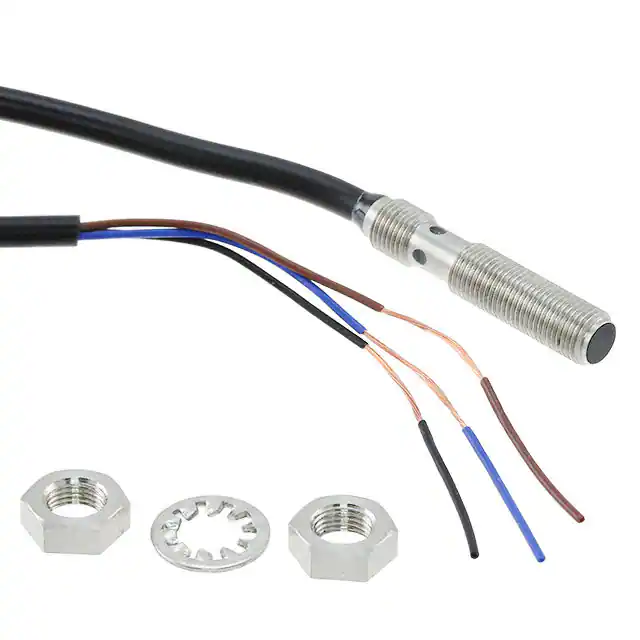Getting Started with the STM32L052K6U7 Microcontroller
The STM32L052K6U7 microcontroller is a popular choice for developers looking to build low-power, energy-efficient embedded systems. With its ARM Cortex-M0+ core and a wide range of peripherals, it offers great versatility and performance in a small package. In this article, we'll explore the key features of this microcontroller and how to get started with programming it.
Features of the STM32L052K6U7
Here are some of the key features of the STM32L052K6U7 microcontroller:
ARM Cortex-M0+ 32-bit RISC core running at up to 32 MHz
256 KB of Flash memory and 32 KB of SRAM
Up to 20 GPIO pins with many configurable options
Two 12-bit ADC converters with a sample rate of up to 1 Msps
Up to 4 ultralow-power comparators
2 DAC channels with output buffer
2 USARTs, 1 SPI, and 1 I2C interface, all with DMA capability
4- to 16-MHz crystal oscillator, internal 32-kHz RC oscillator, and internal oscillators for the watchdog and RTC
Setting up the Development Environment
To get started with programming the STM32L052K6U7 microcontroller, you'll need a development board and an IDE. There are many development boards available that feature this microcontroller, such as the Nucleo-L052R8, which has Arduino Uno headers for easy prototyping. As for IDEs, you can choose from many popular options such as Keil μVision, IAR Embedded Workbench, and STM32CubeIDE.
Once you have your development board and IDE set up, you can start coding your first program. The easiest way to start is by using one of the many example programs included with your IDE. These examples can give you a good idea of the basic structure of a program and how to use various peripherals. You can also find many example programs and libraries on the STM32L052K6U7 product page on the STMicroelectronics website.
Example Application: Reading an ADC
To demonstrate how to use the ADC converter on the STM32L052K6U7, we'll create a simple program that reads from one of the ADC channels and outputs the result to the console.
First, we'll need to configure the ADC peripheral by setting the appropriate registers. The following code sets up the ADC to use one of its channels, with a sample rate of 1 Msps and a resolution of 12 bits:
ADC1->CR &= ~ADC_CR_ADEN; // disable ADCADC1->CFGR1 = 0; // configure ADCADC1->ISR |= ADC_ISR_ADRDY; // clear ADRDY flagADC1->CR |= ADC_CR_ADEN; // enable ADCADC1->CHSELR = ADC_CHSELR_CHSEL0; // select channel 0ADC1->CFGR1 |= ADC_CFGR1_RES_1; // 12-bit resolutionADC1->CFGR1 |= ADC_CFGR1_CONT; // continuous conversionADC1->CFGR1 |= ADC_CFGR1_OVRMOD; // overwrite older resultsADC1->CR |= ADC_CR_ADSTART; // start conversion
Next, we'll need to wait for the conversion to finish and read the result from the ADC\_DR register:
while(!(ADC1->ISR & ADC_ISR_EOC)); // wait for conversionuint16_t result = ADC1->DR; // read conversion result
Finally, we'll output the result to the console using the USART peripheral. We'll assume that USART1 is connected to a serial port on your computer and configured to use an 8-N-1 format:
char buffer[16]; // buffer to hold resultsnprintf(buffer, 16, "%hu\r\n", result); // format resultfor(int i = 0; i < 16; i++) { while(!(USART1->ISR & USART_ISR_TXE)); // wait for transmit USART1->TDR = buffer[i]; // output character}
And that's it! With this code, you can read the analog voltage on one of the ADC channels and output the result to the console.
Conclusion
The STM32L052K6U7 microcontroller is a versatile and powerful choice for low-power applications. With its ARM Cortex-M0+ core and wide range of peripherals, it can handle a variety of tasks with ease. By following the steps outlined in this article, you should now have a good idea of how to get started with programming this microcontroller and using its peripherals in your own projects.

STM32L052K6U7
- Part Number :
- STM32L052K6U7
- Manufacturer :
- STMicroelectronics
- Description :
- IC MCU 32BIT 32KB FLASH 32UFQFPN
- Datasheet :
-
 STM32L052K6U7.pdf
STM32L052K6U7.pdf
- Unit Price :
- Request a Quote
- In Stock :
- 2949
- Lead Time :
- To be Confirmed
- Quick Inquiry :
- - + Add To Cart
Request a Quote
STM32L052K6U7 Specifications
- Package/Case:
- 32-UFQFN Exposed Pad
- Packaging:
- Tray
- Series:
- STM32L0
- ProductStatus:
- RoHS
- CoreProcessor:
- 32MHz
- CoreSize:
- 8K x 8
- Speed:
- 32-Bit
- Connectivity:
- 2K x 8
- Peripherals:
- Active
- NumberofI/O:
- Brown-out Detect/Reset, DMA, POR, PWM, WDT
- ProgramMemorySize:
- I²C, IrDA, SPI, UART/USART, USB
- ProgramMemoryType:
- Surface Mount
- EEPROMSize:
- 27
- RAMSize:
- ARM® Cortex®-M0+
- Voltage-Supply(Vcc/Vdd):
- A/D 10x12b; D/A 1x12b
- DataConverters:
- Internal
- OscillatorType:
- 32KB (32K x 8)
- OperatingTemperature:
- FLASH
- MountingType:
- -40°C ~ 105°C (TA)
STM32L052K6U7 Guarantees

-
Service Guarantees
We guarantee 100% customer satisfaction.
Our experienced sales team and tech support team back our services to satisfy all our customers.

-
Quality Guarantees
We provide 90 days warranty.
If the items you received were not in perfect quality, we would be responsible for your refund or replacement, but the items must be returned in their original condition.
Certified Quality
 View the Certificates
View the Certificates

















